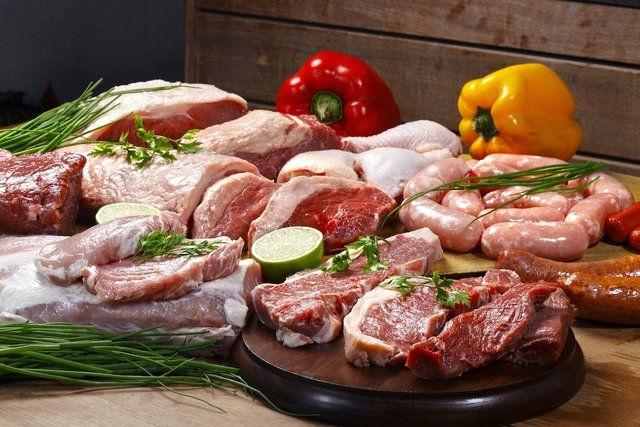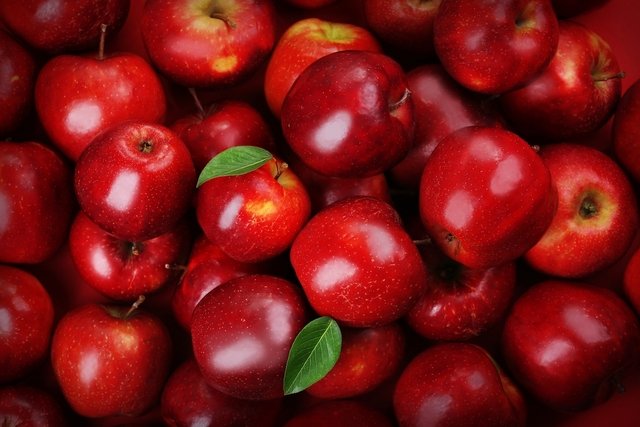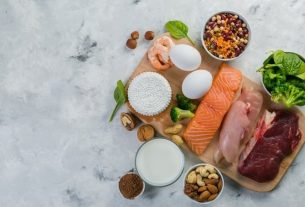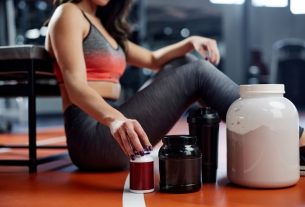Foods rich in phenylalanine are all those that contain a high or medium protein content, such as meat, fish, milk and dairy products, in addition to being found in grains, vegetables and some fruits, such as pine cones.
Phenylalanine is an amino acid that the human body does not produce, but is necessary for maintaining health, and therefore must be consumed through food. However, people with the genetic disease phenylketonuria need to control their intake, as the body cannot digest it, and when phenylalanine accumulates in the body, it leads to problems such as delays in mental development and seizures. Understand better what phenylketonuria is and what the diet is like.

List of foods that contain phenylalanine
The main foods rich in phenylalanine are:
- Red meat: such as ox, mutton, sheep, pig, rabbit;
- White meats: fish, shellfish, poultry such as chicken, turkey, goose, duck;
- Meat derivatives: sausage, bacon, ham, sausage, salami;
- Animal viscera: heart, tripe, gizzard, liver, kidneys;
- Milk and derivatives: yogurts, cheeses;
- Eggs: and products that have it in the recipe;
- Oilseeds: almonds, peanuts, cashew nuts, Brazil nuts, hazelnuts, pine nuts;
- Wheat flour: foods that contain it as an ingredient;
- Grain: soy and derivatives, chickpeas, beans, peas, lentils;
- Processed foods: chocolate milk, gelatin, cookies, bread, ice cream;
- Fruits: tamarind, sweet passion fruit, raisin banana.
In cases of people with phenylketonuria, it is recommended that the amount ingested or the exclusion of foods from the diet be regulated according to the severity of the disease and should follow the advice of the doctor and nutritionist, who will indicate the appropriate treatment. See an example of what phenylketonuria might look like.

Amount of phenylalanine in foods
The table below shows some foods with the highest or lowest amount of phenylalanine in 100 g:
Bibliography
- NATIONAL NEONATAL SCREENING PROGRAM (PNTN). Phenylketonuria (PKU). Available at: <https://www.saude.gov.br/acoes-e-programas/programa-nacional-da-triagem-neonatal/fenilcetonuria-pku>. Accessed on Aug 31, 2020
- ANVISA. Phenylalanine content in foods . Available at: <https://app.powerbi.com/view?r=eyJrIjoiMzJmZTMzMmQtM2MzMS00Yjk3LTg2MTMtZDlkN2Q0OGI0MWMxIiwidCI6ImI2N2FmMjNmLWMzZjMtNGQzNS04MGM3LWI3MDg1ZjVlZGQ4MSJ9>. Accessed on Aug 31, 2020
- NATURE. Phenylalanine hydroxylase deficiency: diagnosis and management guideline. Available at: <https://www.nature.com/articles/gim2013157>. Accessed on Aug 31, 2020

Sign up for our newsletter and stay up to date with exclusive news
that can transform your routine!
Warning: Undefined array key "title" in /home/storelat/public_html/wp-content/plugins/link-whisper-premium/templates/frontend/related-posts.php on line 12
Warning: Undefined array key "title_tag" in /home/storelat/public_html/wp-content/plugins/link-whisper-premium/templates/frontend/related-posts.php on line 13




